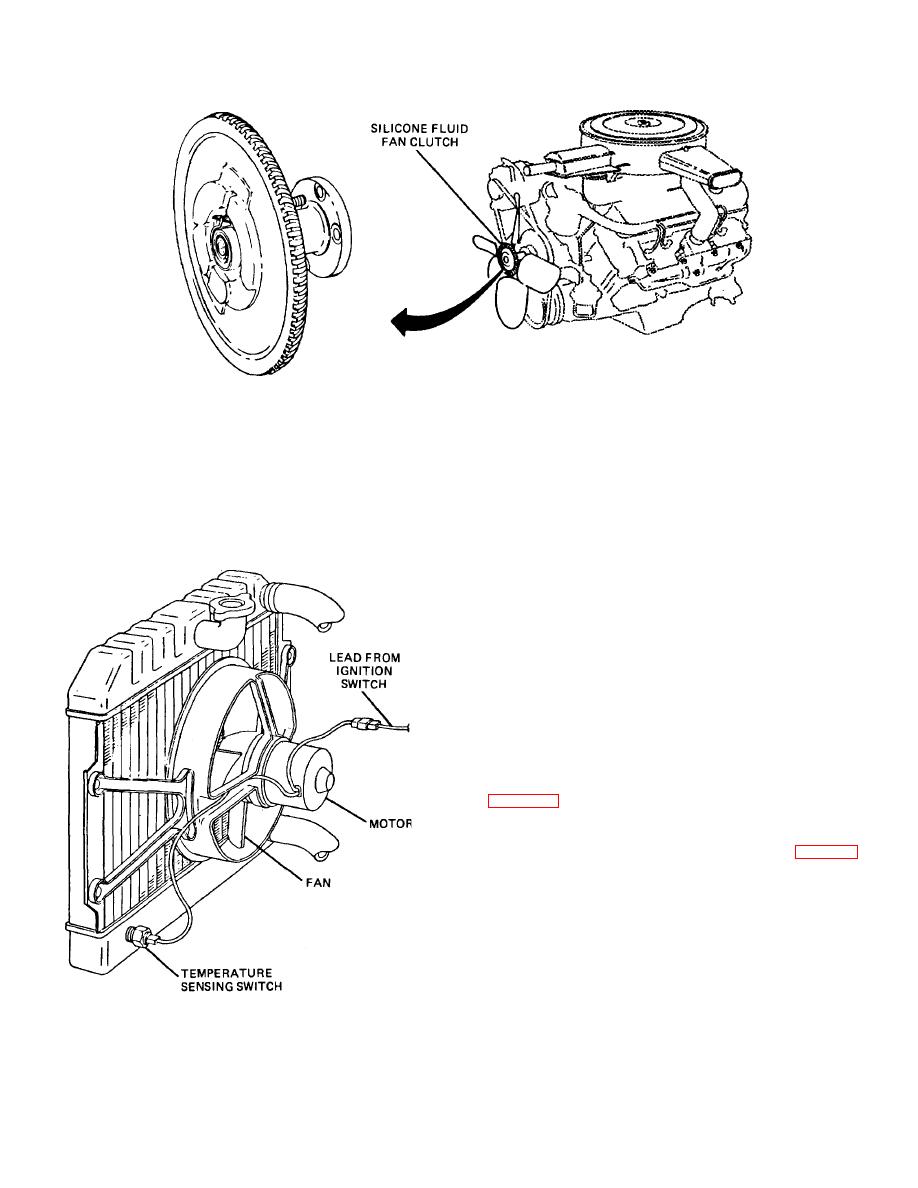
| Tweet |

Custom Search
|
|

|
||
 TM 9-8000
Figure 9-4. Viscous Fan Clutch
temperature of the air drawn through the radiator. The
automotive use. In the newer configurations of front-
clutch will provide controlled slippage if the temperature
wheel drive vehicles with transversely mounted engines,
of this air is below a preset minimum. A fan clutch also
the electric fan is a necessity because the end of the
will control the noise and the power consumption of the
engine is not located directly behind the radiator.
fan by limiting its speed to a preset maximum.
Description and operation of the fan is as follows:
b.
Electrically Motorized Fan (Fig. 95).
The
(1) The fan blade is mounted on the motor shaft.
electrically motorized fan is gaining popularity in
The motor and fan blade assembly then is mounted
directly behind the radiator core.
(2) The fan receives electric current through the
ignition switch and a temperature sensitive switch
located at the bottom of the radiator. The purpose of this
radiator thermal switch is to turn on the fan to provide
cooling whenever the temperature of the coolant reaches
approximately 210F (98.8C). This serves to allow the
fan to run only when needed.
(3) Some models incorporate a timed relay that
allows the fan to run for a short time after engine
shutdown. This, in conjunction with thermosiphon action
boilover after engine shutdown.
c. Variable Pitch (Flexible) Fan Blades (Fig. 9-6).
Some vehicles are equipped with blades that are made
of flexible aluminum or fiberglass. These fan blades are
made to change pitch as the speed of the fan increases
so that the fan will not create excessive noise or draw
excessive engine power at highway speeds.
TA233495
Figure 9-5. Electrically Motorized Fan
9-5
|
||
 |
||